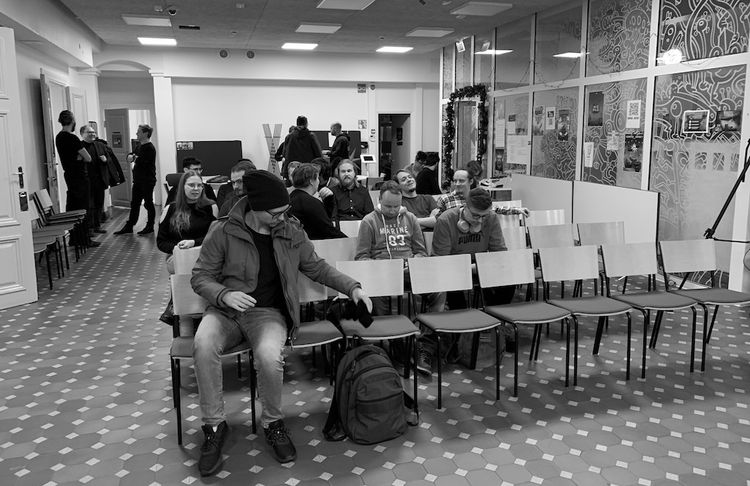4 ways hyper-casual games have benefited the gaming industry

No, this is not an article about how the hyper-casual market has peaked. This isn’t an article about how poorly the hyper-casual games generate value for advertisers who buy ad inventory. And this isn’t an article about how crowded the market of hyper-casual games already is and how big studios are cloning and fast-following all the successful hyper-casual incarnations.
No, this is an article about why hyper-casual is the best thing that’s happened to the games industry in years.
Hyper-casual development
I’ve been doing a lecture series at the Oulu Game Lab (OGL) this fall. OGL is a game development school, situated in Northern Finland, and it’s an innovative training program that focuses on the gaming industry, organized by the Oulu University of Applied Sciences.
This semester, the school decided they’ve focused on developing hyper-casual games. The first reactions were that this is a very bad idea. You could hear people saying that these hyper-casual games aren’t “real games”. And even if they would be real games, they’d restrict the creativity and artistic freedom of the students, who should be able to experiment.
Over the course of the fall, I’ve been witnessing something completely new. These first-year students are pushing their builds to the App Store, and they are running Facebook campaigns to drive installs to their games. Then they are monitoring the metric, to see the session lengths, level completions, and some early retention numbers. Not to mention the CPI (cost-per-install) and other user acquisition metrics.
These students are learning all the necessary activities that you’d need to learn to run an effective mobile games team. And they are learning it at an accelerated pace because the hyper-casual games can be developed and launched in a matter of weeks. Just last year, the students were making PC games for Steam, and the entire year was just spent on the concept and prototyping. The latest batch of students will gain skills which they can immediately use, in their own gaming startups or in other industry jobs.
Using hyper-casual to learn free-to-play
It’s not only the students who are figuring out the magic of rapid development in hyper-casual. Since hyper-casual games are mostly glorified prototypes of “real games”, it doesn’t take a big team to put something together in a few weeks and ship the game out for testing. The more skills you have, the more you can focus on building frameworks and tools to accelerate the rapid game development process.
Umami Games from Copenhagen, Denmark, operates with a team of three. They are putting out new hyper-casual games into soft launch twice a month. They build out the core gameplay, in which they experiment with the theme and the gameplay, and quickly see if the development work of a few weeks is paying off.
The CPIs of hyper-casual games is fairly low because hyper-casual games have a mass appeal. They don’t require you to understand hard-to-master gaming controls, and you won’t be challenged. They are just easy to pick up and fun to play.
Because of the mass appeal and large audience sizes, small game development studios like Umami won’t need large marketing budgets to acquire players. Hyper-casual install costs are ranging from $0.10 to $0.50 and running soft launch tests to find the games that are justified a proper hard launch.
Bigger hyper-casual developers like Voodoo have built up developer networks, where they help small studios to develop hyper-casual games and then they end up publishing the best ones. Since the development time is so short, Voodoo’s publisher activities see dozens and dozens of new games go through their pipeline every month. Picking the winners has never been more effective for a game publisher.
Testing the game, before the game is created
Since hyper-casual games don’t need to look like more than a game prototype, it has become easier to just build animated concepts of the games, communicating what kind of a game needs to be built. Developers have started to run tests with ad creatives, to understand if a game concept has appeal before even a line of code is written. Developers have started to understand, that in any case, the core gameplay is what really matters for mobile games, it’s the “make it or break it”.
If you run a video ad, which illustrates the core gameplay, you can measure people’s appeal towards the game. Potential players are in-masses converting from the ad impressions to a fake App Store page and tapping install to download the game. This can be used as evidence that the gameplay is a winner and its justified to continue the development of the game.
Learning from hyper-casual
Mid-core developers have picked up the tricks of hyper-casual development and brought them to new gaming genres. Archero, developed and published by Habby Games, launched earlier in 2019. Archero is a game that combines a hyper-casual core gameplay experience, with a more role-playing game (RPG) like meta game with an elaborate in-game economy. On the surface, Archero looks like a hyper-casual game – you kill the monsters with your arrow-shooting character, and then you run to the exit and another level starts.
Similarly, a developer called Playgendary has been dabbling in the same space for a while now. Their Masters game series, which includes games like Partymasters, Pinatamasters, and Golfmasters, all rely on a similar game structure. They’ve built a hyper-casual core experience, tied with an elaborate meta game.
Why are developers building out these meta games, when they could just as well release them as hyper-casual games? There is a flaw in hyper-casual: pure hyper-casual games don’t attract players for long, and they become throw-away games. Retention day-7 is already a lost battle, where industry standards would expect 20%, but the average hyper-casual title can’t reach more than 10%.
The developers of Archero and Partymasters are figuring out that their games can achieve similar low CPIs that hyper-casual games see, but with higher player live-time values (LTV). This is because of the RPG meta game, which provides a sense of player progression, where the player is in a progression loop of getting better gear to beat harder content. Players gain a daily habit of returning to the game for longer periods of time, and retention numbers start to equal those of mid-core games. To reach high LTVs, the progression loop is amplified with in-app purchase monetization, which is unheard of in pure hyper-casual games.
Another way to look at this: Habby and Playgendary could have built traditional mid-core games but decided to create a hyper-casual experience on the surface, which enables a wider audience, and later in the player’s journey, the game reveals the underlying progression elements and in-app purchases.
What the future looks like
I was recently having a lecture at a game school, and a student approached me after the lecture. He was curious to know if old-school game development, where you build a “real game” and then you launch it to success, is over. He was worried that won’t there be a chance to find success without all this data-oriented game development.
I told him that it is still possible, but the risks of failing and not getting any money out of your game are high. Would you want to dedicate a team for 12 months on a big project, and then realizing if the game has appeal or not? I’m not advocating hyper-casual as the “be all and end all” way of developing games, but I do advocate you to take a close look at the development processes of hyper-casual games. The benefits are clear: you gain new possibilities of rapid development, measuring appeal early and reaching a wider audience.





